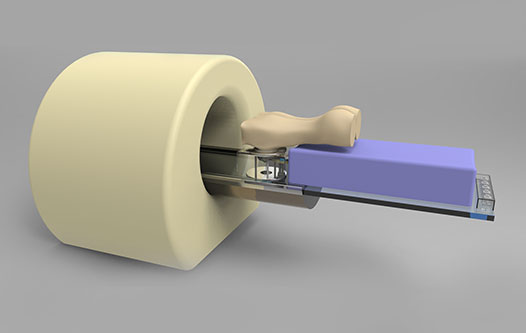
A novel tendon-driven MRI (Magnetic Resonance Imaging) compatible robotic system for breast biopsy and brachytherapy developed by Tianjin University (TJU) faculty and students was showcased at the 7th Annual Meeting of Chinese College Students’ Innovation and Entrepreneurship.
Radioactive seed brachytherapy is an advanced method used in cancer therapy. Radioactive seeds are implanted by needle into cancerous tissue to kill cancer cells, so as to achieve therapeutic purposes without injuring the surrounding healthy tissue. Nevertheless, there exist many problems with manual operations, such as the low accuracy of skin puncturing on average, and irradiation of surgeons by radioactive seeds.
The MRI guided tendon-driven robotic system for breast brachytherapy developed by TJU faculty and students provides a solution for these problems.
Under the special circumstance of the nuclear magnetic resonance, surgery is required to avoid distortion to imaging, which will lower the operation precision. In this regard, tendon transmission was designed. With tendon force, the robot performs lifting, rotating, lateral, and yaw motion, so that surgery is performed by the robot via remote control and with high accuracy.
To fulfill the requirement of magnetic resonance compatible, ultrasonic motors are also used to drive the robot. Besides, the body and key components of the robot are made of specially chosen nonmagnetic materials.
Concerning its design ideas and application fields, this type of robot is the first of its kind in China, as well as an internationally cutting-edge technology and research focal point. The research on this robot, sponsored by national and ministerial projects, obtained nationally-authorized patents for invention.
"This robot is simpler in structure and superior in performance,” said Associate Professor Jiang Shan from the School of Mechanical Engineering of TJU. “Its research and development is a leading edge discipline crossing with mechanical and medical disciplines. The robot applies to not only surgery of breast brachytherapy seed placement, but also biopsy especially for small lesions of breast cancer.”
Researchers will continue to improve on their research. She added, “Currently, we are continuing to test its performance through experiments. We are collaborating with imaging departments of hospitals on joint research, so as to use the robot in clinics as soon as possible."






